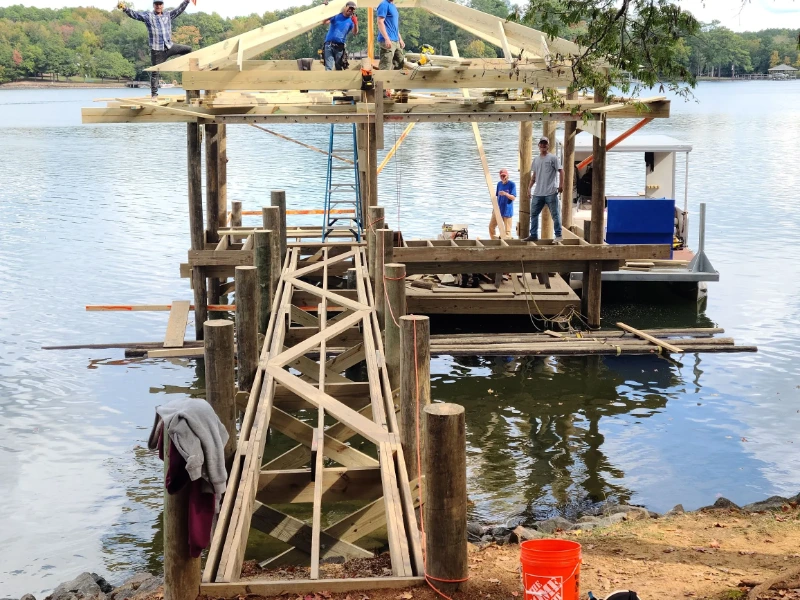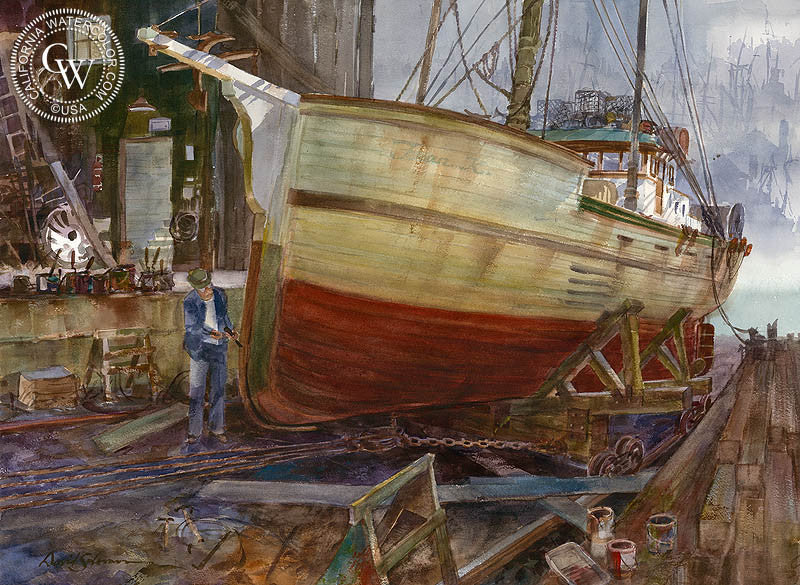Reliable Dock Fixing Techniques: Making Certain Architectural Honesty
Making certain the architectural integrity of docks via efficient fixing techniques is extremely important for the long life and safety and security of marine centers. This entails a multi-faceted technique starting with extensive evaluations using innovative innovations like sonar tools and from another location operated vehicles (ROVs) to detect both noticeable and hid damages. Ultimately, selecting the right repair products, such as corrosion-resistant alloys and composite products, is critical for durability. Architectural reinforcement methods, consisting of the application of cross-bracing systems and load-distribution plates, play a vital duty in mitigating tension factors. The significance of these strategies ends up being obvious when discovering advanced repair work methods and preventative upkeep strategies.
Evaluating Dock Damages
Assessing dock damage is a critical primary step in making certain the structural integrity and security of any docking center. This initial analysis involves an extensive assessment to recognize both noticeable and hidden damages. Secret elements to take a look at consist of the dock's structure, pilings, outdoor decking, and equipment. Each part has to be scrutinized for signs of wear, rot, corrosion, or other forms of degradation that could compromise the structural integrity.
Architectural designers or certified examiners usually do these evaluations using specialized strategies and devices. For instance, underwater inspections might use finder equipment or remotely ran automobiles (ROVs) to discover submerged damage. Over water, visual evaluations are complemented by utilizing wetness meters and other analysis devices to reveal underlying issues not instantly visible to the nude eye.

Picking Repair Service Materials
Choosing the ideal fixing products is a pivotal action in the dock repair procedure, one that directly influences the durability and performance of the repaired structure. Material selection should be driven by elements such as environmental problems, load-bearing needs, and compatibility with existing dock parts. For example, timber is a traditional selection for anchors as a result of its all-natural durability and aesthetic appeal. Nonetheless, picking the ideal kind of wood, such as pressure-treated lumber or naturally rot-resistant varieties like cedar or teak wood, is crucial to withstand marine atmospheres.
In enhancement to wood, composite materials are progressively popular because of their toughness and low upkeep requirements. Compounds, usually made from a blend of plastic and wood fibers, offer exceptional resistance to rot, insects, and UV damages. For steel docks, picking corrosion-resistant alloys such as galvanized steel or marine-grade aluminum is vital to stop corrosion and guarantee architectural stability in saline water conditions.
Epoxy resins and marine-grade sealers are indispensable for repairing cracks and sealing joints, supplying a water-proof obstacle and enhancing the dock's overall stamina. By thoroughly picking top quality materials, dock repair services can attain long-lasting results, thereby protecting against future destruction and ensuring safe, trustworthy usage.
Architectural Support Strategies
Effective architectural support methods are crucial in ensuring the stability and long life of dock repair services. This technique is especially effective for anchors subjected to heavy lots or extreme ecological problems.
Another essential strategy is the application of fiber-reinforced polymers (FRP) These products offer high strength-to-weight proportions and exceptional resistance to rust, making them ideal for enhancing wood or concrete anchors. FRP can be applied in strips or sheets and adhered with epoxy resins to enhance architectural stability.
Supporting and anchoring systems also play a crucial function in structural support. Cross-bracing, using steel or wooden light beams, can combat lateral pressures, decreasing guiding and motion. Anchoring systems, such as helical piers or driven heaps, supply a stable structure by transferring loads to much deeper, much more steady dirt layers.
Lastly, the integration of load-distribution plates can help disperse weight more evenly throughout the dock's surface area, minimizing local tension points. These methods collectively make certain that anchors continue to be robust and safe, efficient in withstanding the roughness of their operational atmosphere.
Advanced Fixing Methods

One more sophisticated method includes underwater welding, which permits repair work to be carried out without the requirement to dewater the location. This approach is specifically useful for resolving architectural problems in submerged dock components, guaranteeing minimal disruption to operations. Improved welding strategies, combined with robotic systems, deliver precision and integrity, therefore prolonging the life expectancy of the dock.
Additionally, cathodic protection systems are applied to protect against deterioration in metallic dock structures. By using sacrificial anodes or satisfied existing systems, these strategies successfully reduce the electrochemical procedures that lead to material deterioration.
Last but not least, advanced monitoring innovations, such as architectural health tracking (SHM) systems, give real-time data on the condition of dock structures. These systems allow proactive upkeep and prompt interventions, inevitably guaranteeing the lasting structural honesty of the dock.
Maintenance and Avoidance
Maintenance and avoidance are fundamental ideas that underpin the longevity and safety and security of dock structures. Routine examinations are vital, permitting for very early discovery of deterioration, possible weaknesses, and ecological influences. A proactive technique, entailing routine look for corrosion, rot, and structural changes, mitigates expensive fixings and prolongs the dock's operational life.
Preventative measures must consist of applying protective finishes to metal parts to defend against rust and making use of treated timber to stand up to degeneration. In addition, making certain appropriate drain and ventilation can avoid water accumulation, which is a common source of architectural destruction. Integrating high quality products and sticking to manufacturer guidelines during building and repair service stages additionally play crucial roles in enhancing toughness.

Educating employees in dock maintenance best methods makes certain consistent application of safety read what he said nets. Leveraging technical developments, such as drones for evaluations and sensors for real-time surveillance, can additionally enhance upkeep efforts. By prioritizing upkeep and avoidance, dock owners can make certain architectural integrity, functional security, and economical administration over the dock's lifespan.
Verdict
In final thought, keeping the architectural honesty of marine facilities requires detailed dock fixing strategies. Advanced repair service techniques, coupled with regular upkeep look at more info methods, guarantee the dock continues to be operational and risk-free under varied environmental conditions.
Making sure the architectural integrity of docks through effective repair work techniques is critical for the durability and security of marine facilities.Choosing the suitable repair work materials is a critical step in the dock restoration process, one that directly affects the long life and efficiency of the fixed structure.Efficient structural reinforcement strategies are crucial in ensuring the security and long life of dock repair services. By prioritizing maintenance and prevention, dock owners can ensure architectural stability, operational safety, and cost-effective monitoring over the dock's life expectancy.
In final thought, maintaining the architectural stability of marine centers requires extensive dock repair strategies.